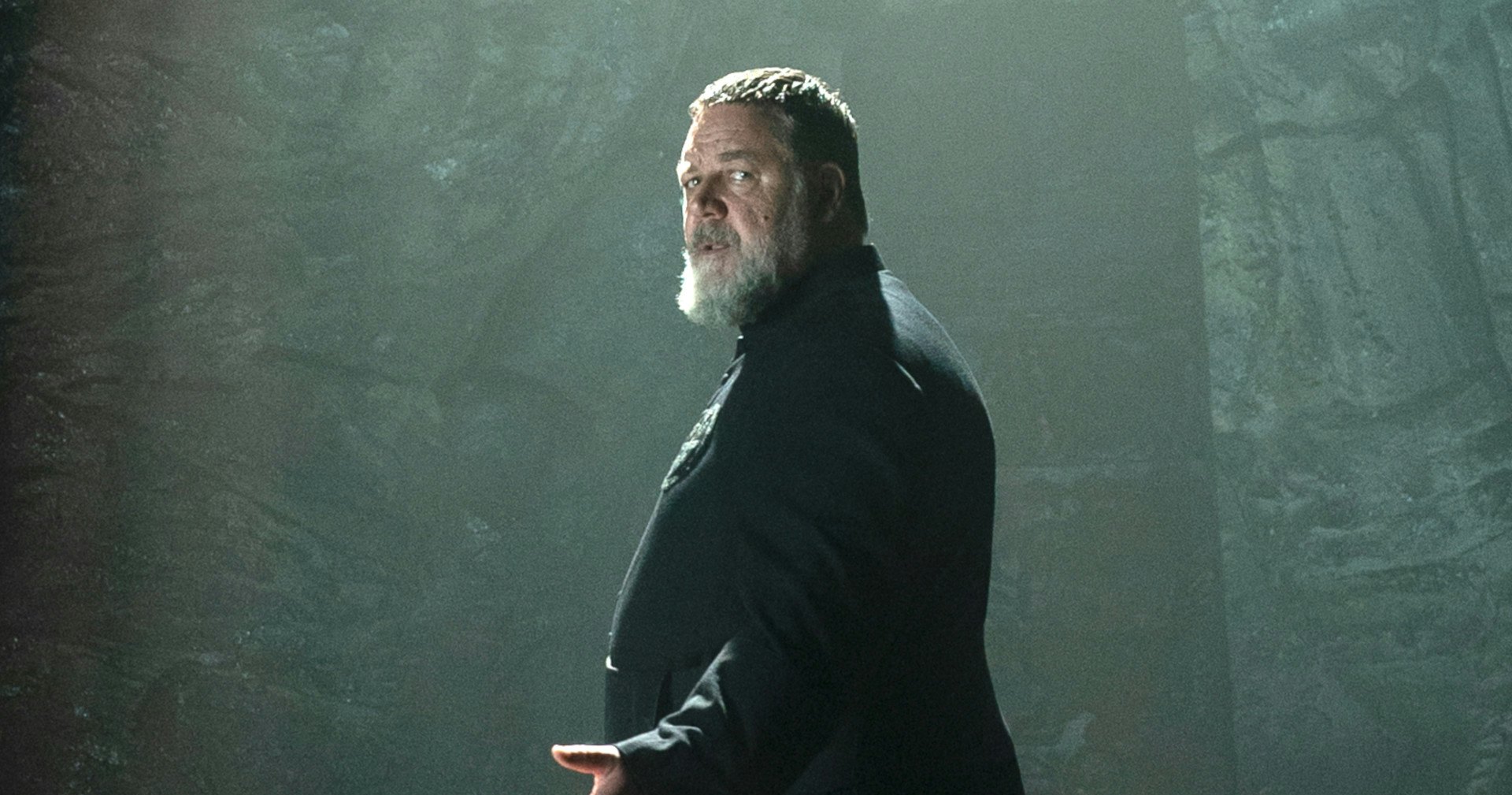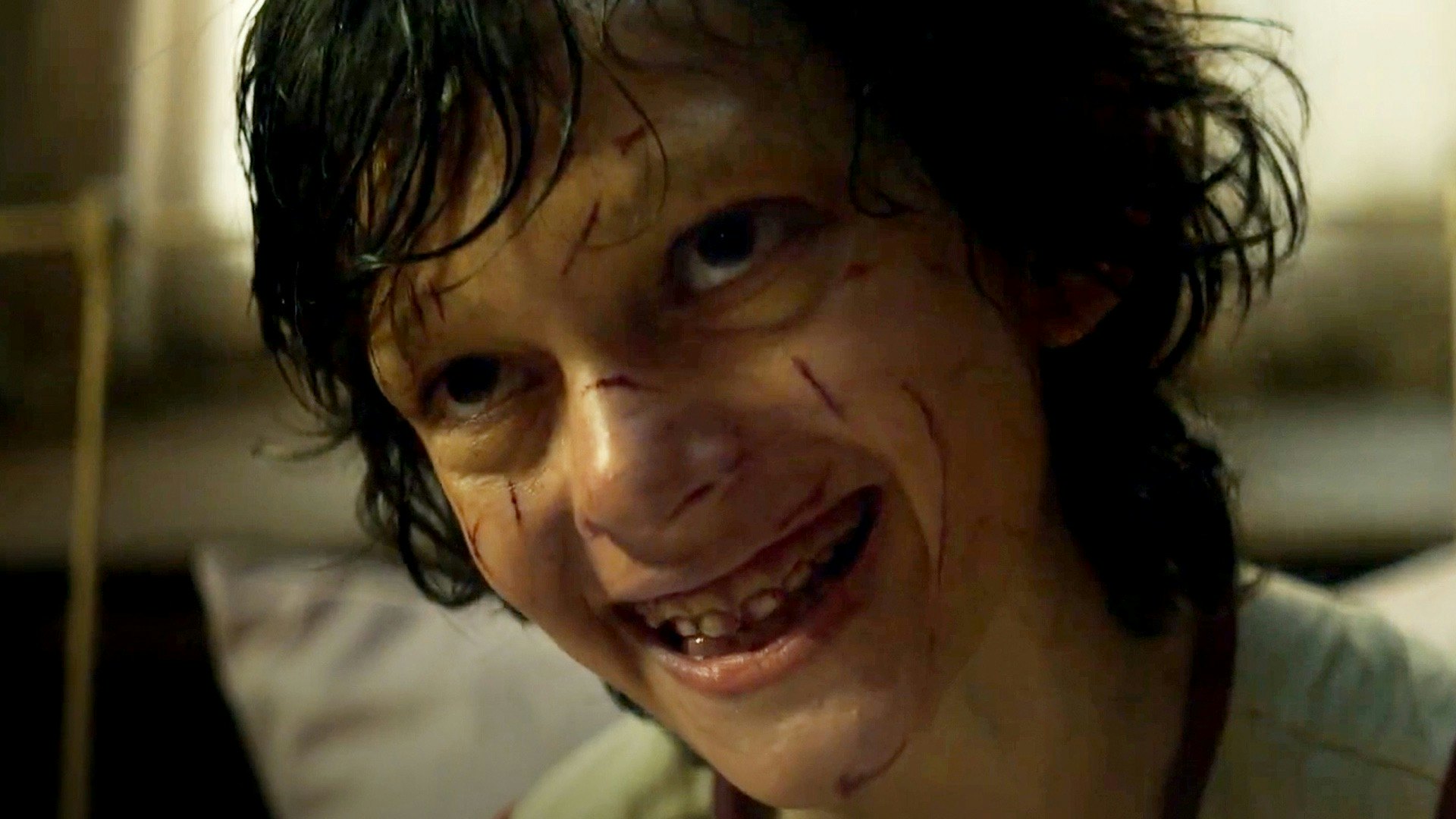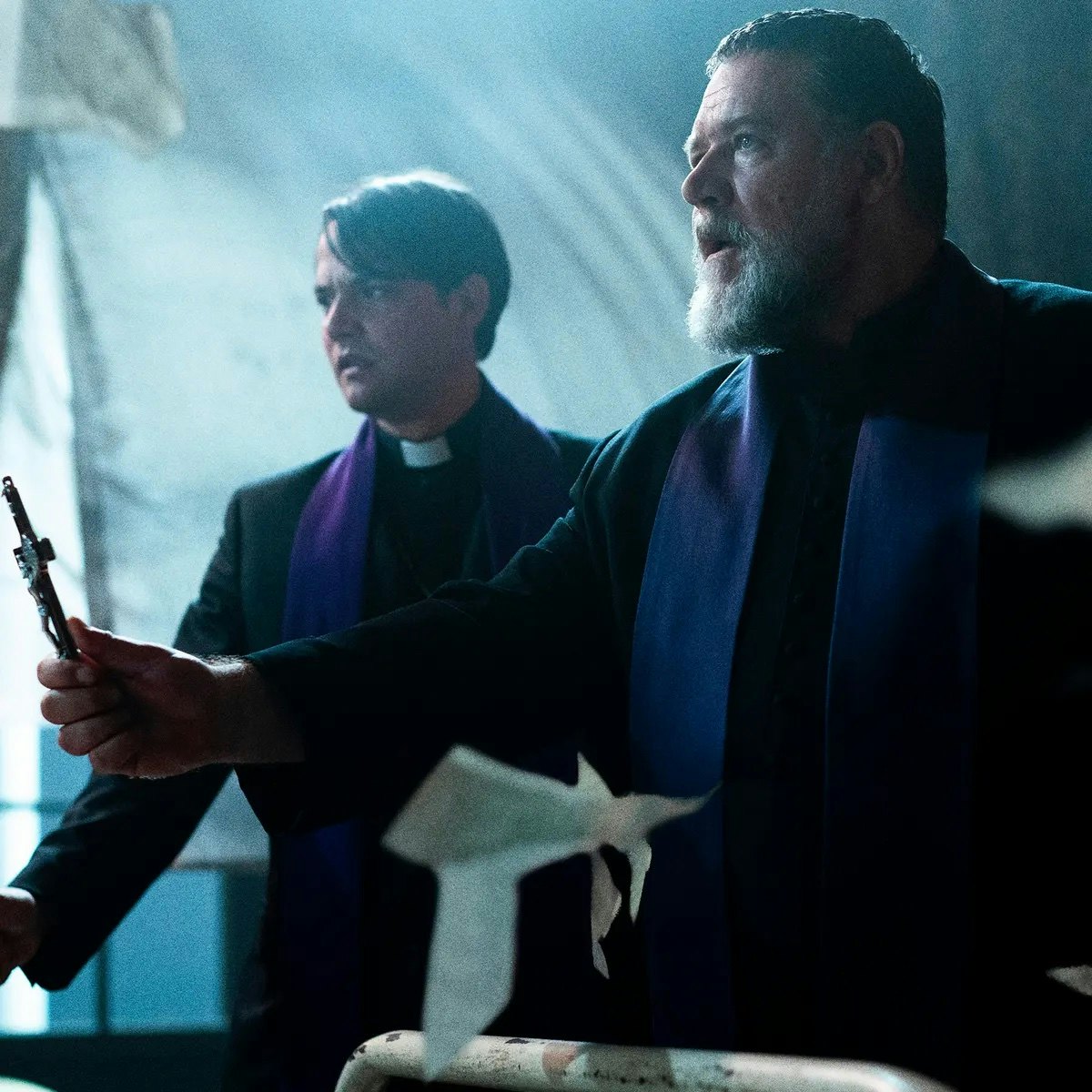
There isn’t much you can do with the exorcism sub-genre that hasn’t already been done before — or done better by William Friedkin’s The Exorcist nearly 50 years ago — but director Julius Avery lets the chips fall where they may with The Pope’s Exorcist.
Led by a mischievous Russell Crowe, who practically guides its tone in every scene — whether it aims for tension, levity, or emotional grounding — the result is rarely scary, or even particularly unnerving. But The Pope’s Exorcist is an enjoyable watch whenever Crowe appears as Father Gabriele Amorth, a real priest who may as well be a loose inspiration for Crowe’s smooth, so-silly-he-ends-up-kind-of-cool conception of the real-life lawyer and theologian. The film is by no means terribly assembled — it’s a significant step up from Avery’s previous effort, the sluggish superhero movie Samaritan — but Crowe makes The Pope’s Exorcist entirely worthwhile.
Writers Michael Petroni and Evan Spiliotopoulos, who adapt elements of Amorth’s own books An Exorcist Tells His Story and An Exorcist: More Stories, take a distinctly Conjuring-like approach. They transform a figure who was likely a fraud — or at best, a racist doofus who claimed yoga and Hinduism were paths to Satan — into a heroic figure because it makes for some rich material. Right from its opening scene, The Pope’s Exorcist crafts an intriguing portrait, mostly thanks to Crowe’s subtly wry approach to his calculated saunters and bouncy dialogue (in either Italian or Italian-accented English), as Amorth engages in a ritualistic exorcism to solve a possession in which he clearly doesn’t believe. Why, then, would the Vatican’s chief exorcist even keep this job? This question is answered shortly thereafter when he’s asked to explain himself to an investigative panel of bishops, to whom he confesses that although he thinks 98% of possession cases have rational explanations, the remaining 2% keep him up at night.
The movie is, of course, about a fictitious case belonging to that latter group, which sees an American widow, Julia (Alex Essoe), move into the Spanish abbey owned by her late husband, along with her moody teenage daughter Amy (Laurel Marsden) and her sweet but silent tween son Henry (Peter DeSouza-Feighoney), reluctant outsiders ripe for demonic shenanigans. The local construction workers dig a little too deep while repairing the abandoned abbey, releasing some foul-smelling, flammable gas, and something sinister lurking in the dark. Before long, Henry begins tilting his head sideways and speaking in the voice of Ralph Ineson (The Green Knight himself). This leads to Amorth being assigned to the case by none other than The Pope, played with panache and gravitas by Spaghetti Western legend Franco Nero, who doesn’t so much portray Pope John Paul II as he does the nebulous idea of a Pope (the way Hollywood action movies feature fictitious U.S. presidents).

At times, it feels like Amorth traveling between locations ought to have made up a more significant chunk of the film’s 103-minute runtime — not because they offer any particular insight, but because the ridiculous image of a bearded rotund Crowe in his Orson Welles era, clad in black while astride a red and white Ferrari moped, becomes especially delightful when it’s made to clash with Jed Kurzel’s eerie, booming score. What tuxedos and shaken martinis are to James Bond, a top hat and holy water soon become to Amorth whenever he casually prepares to meet the Devil, quipping and joking along the way as nearby families undergo the worst days of their lives. Amorth is clearly a man burdened by the past, but the way he constantly stays afloat using humor as a life raft is often jaw-droppingly funny. What he says is never inappropriate — he playfully cuckoos at children and young nuns in training, like a harmless, quirky uncle — but his timing is never opportune (he finds the worst possible moment to ask a traumatized character for a cup of coffee).
Assisted by a young Spanish pastor, Father Esquibel — played with a more straightforward, sincere grace by Daniel Zovatto — Amorth engages the mysterious demon co-opting Henry’s body and soon begins to discover the true power with which he’s dealing. As he lays out the film’s exorcism rules, he also touches on hidden elements of his and Esquibel’s past, which become prominent fixtures of the film when the aforementioned presence forces each man’s lingering guilt to take physical form at one point or another. The buried past resurging is a central theme, with the film going as far as to touch on not only the Catholic Church’s long-standing covers ups of sexual abuse, but the horrors of the Spanish Inquisition — neither of which are delved into in much detail, but both of which end up woven into the film’s mechanics.

There’s the requisite amount of screaming and limb-twisting one might expect from an exorcism story, not to mention hallways that are appropriately dingy whenever the camera lingers a few seconds too long, conjuring mental images of what might pop out from the shadows. However, while every other actor ends up engaging seriously with the material as it’s written — even when it gets lost in the weeds if its own winding lore — Crowe transforms it, elevating it from a rote horror procedural into a film about a jovial figure weighed down by an unseen past. Where everyone else is running from demons, Crowe’s Amorth is running from himself. What’s technically at stake might be the life of a young boy, but the film’s real drama is born in the moments Amorth is forced to take things seriously, and the light drains from Crowe’s face as he confronts both past and present horrors.
Whoever else may perish during the proceedings, Amorth is such a richly-formed and immediately familiar character that as long as Crowe makes it to the end credits, it’ll feel like all is well. Few horror films have so benefitted from the presence of such a genuine, effortless star.







